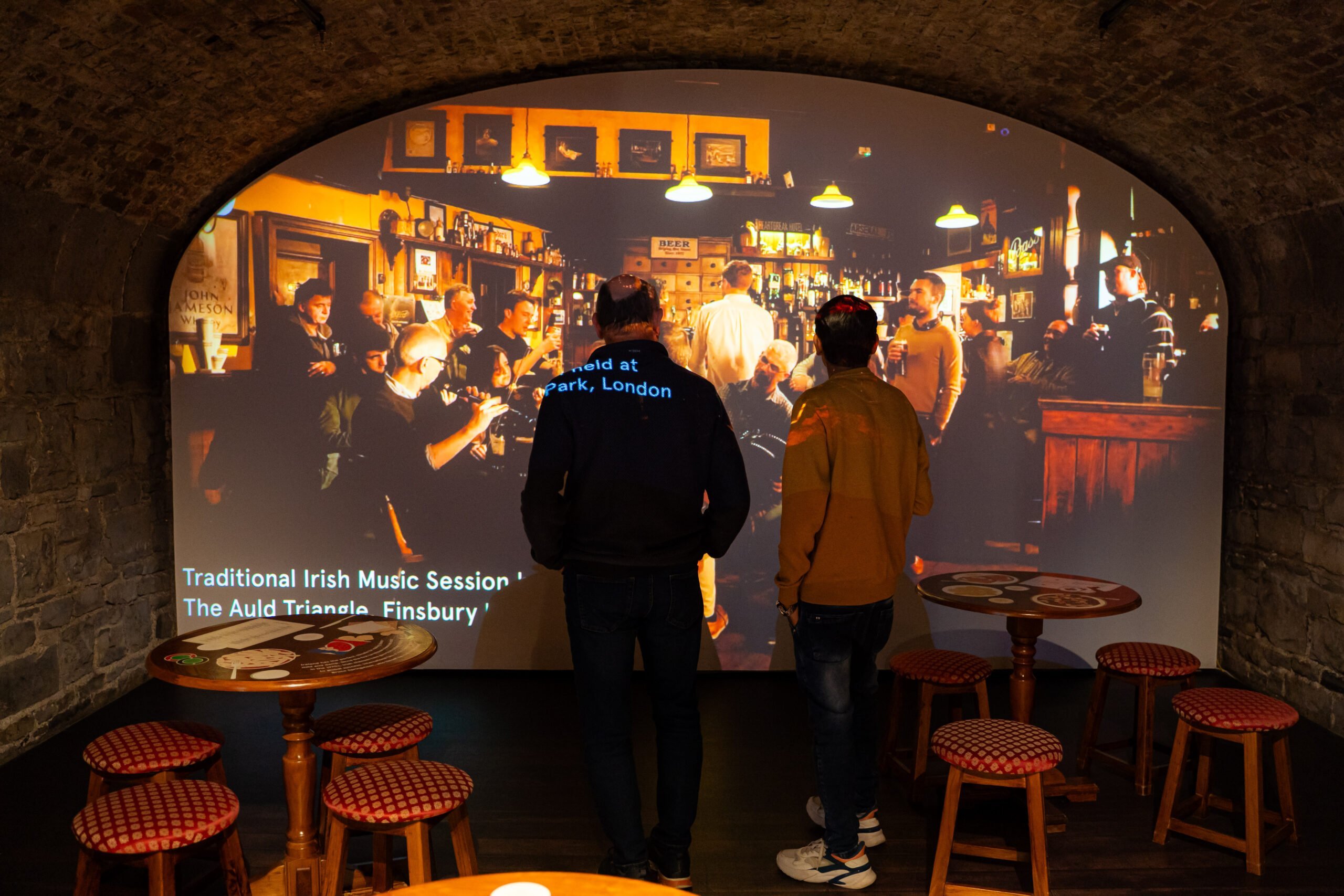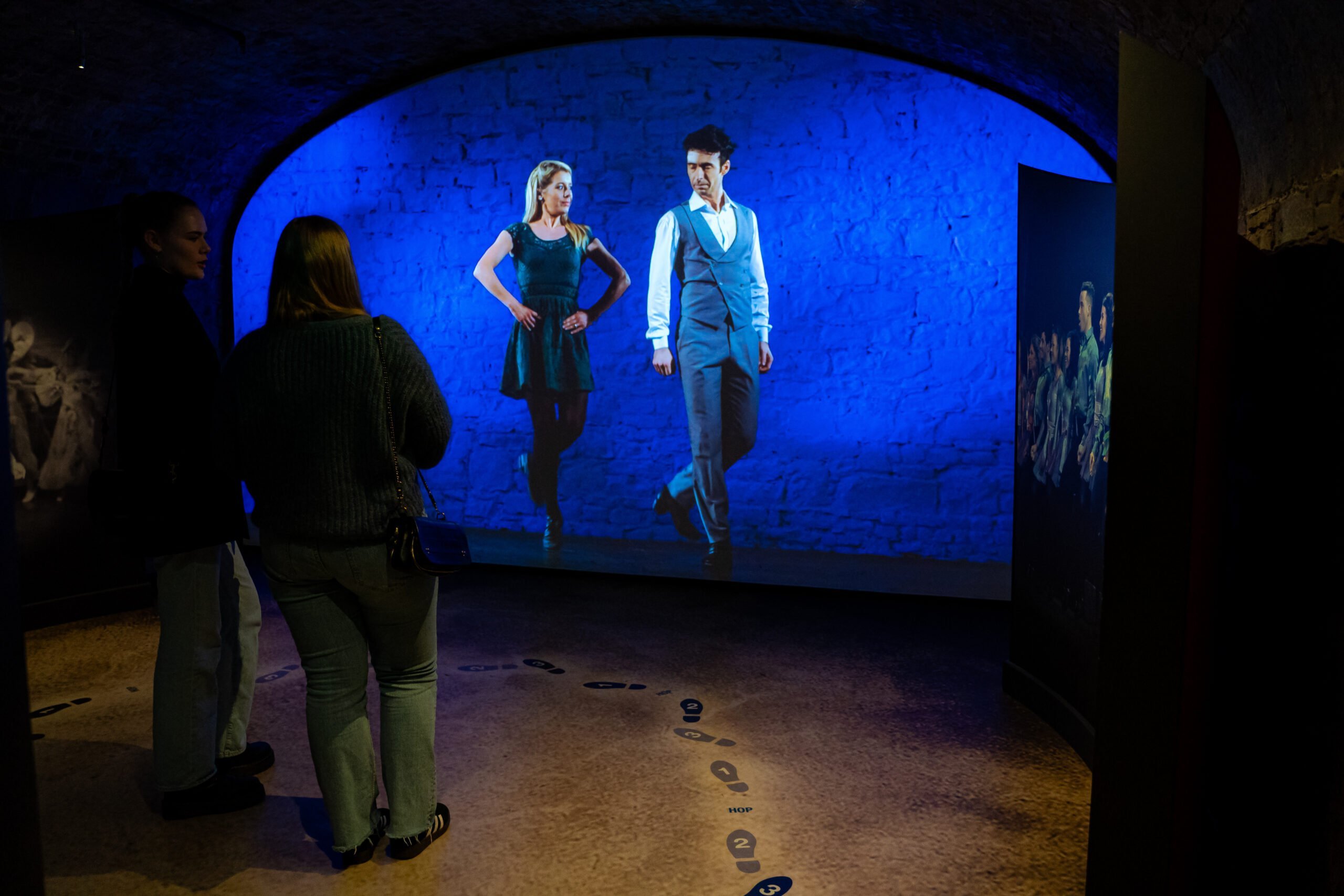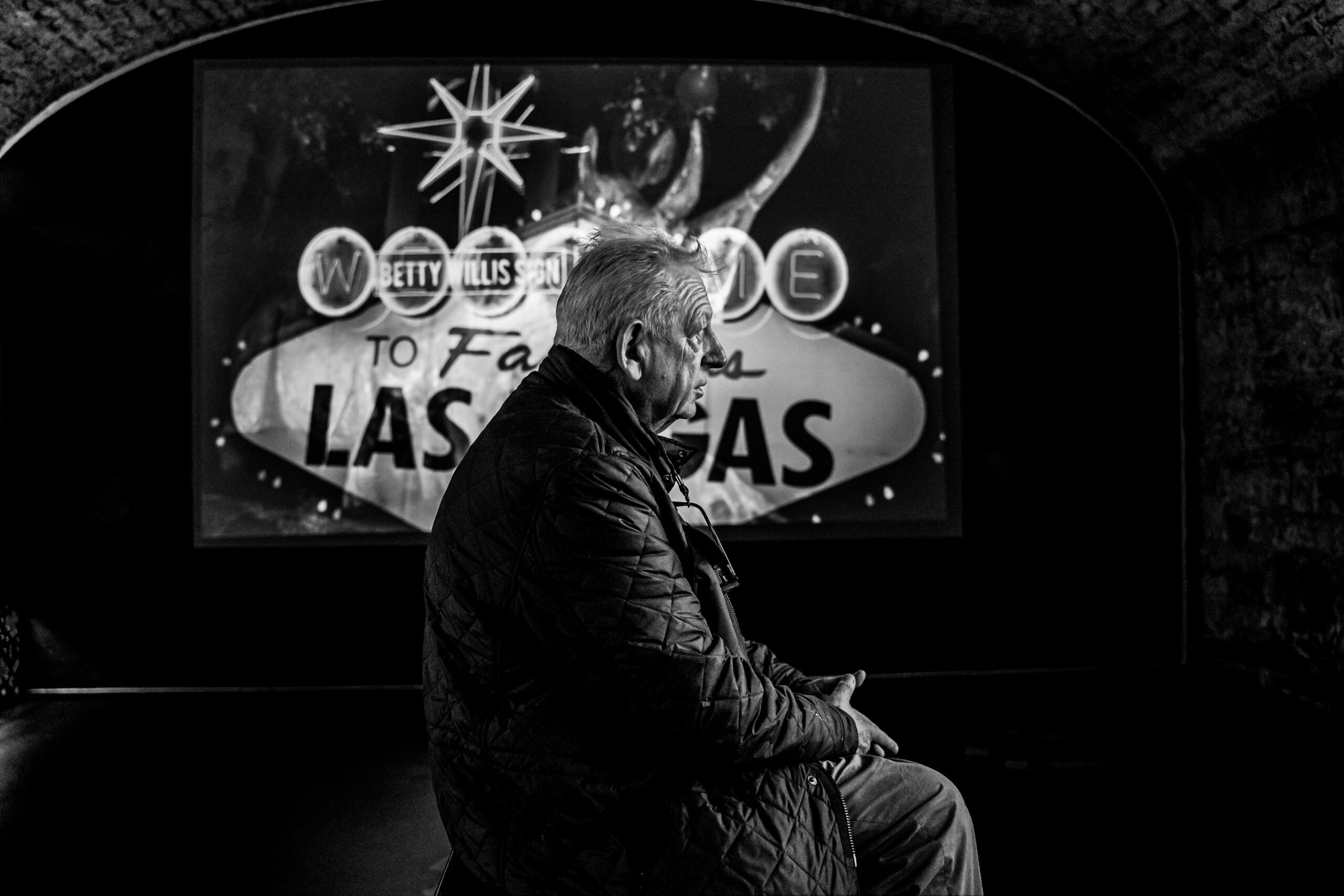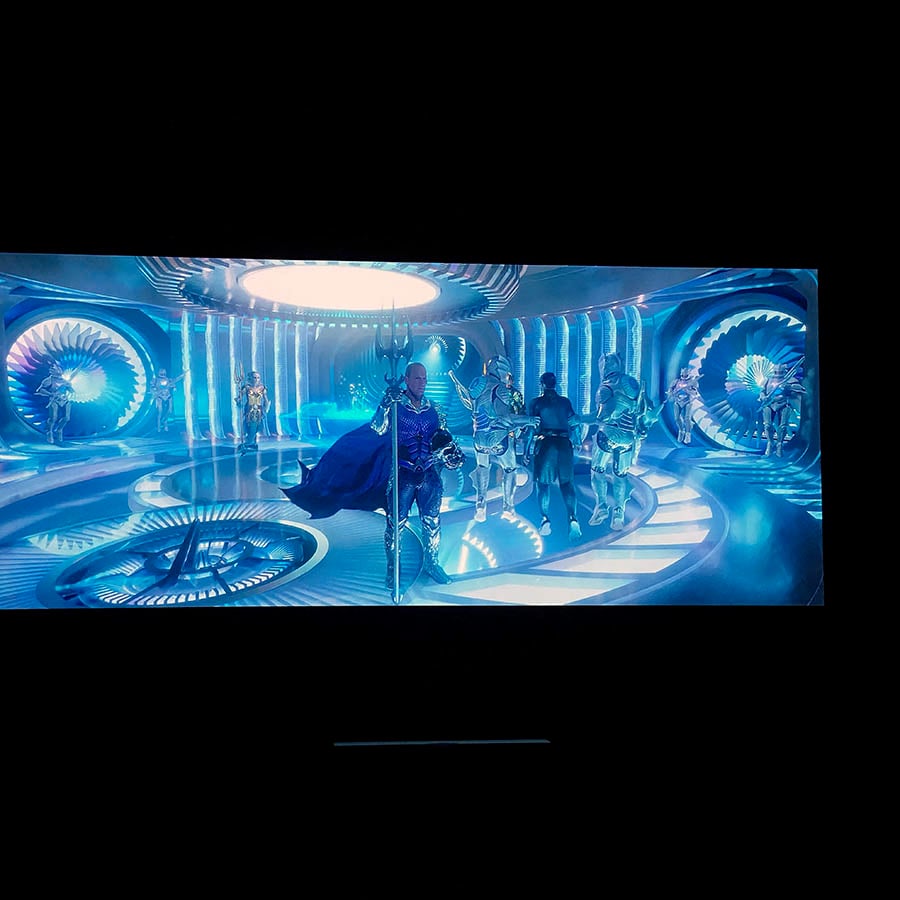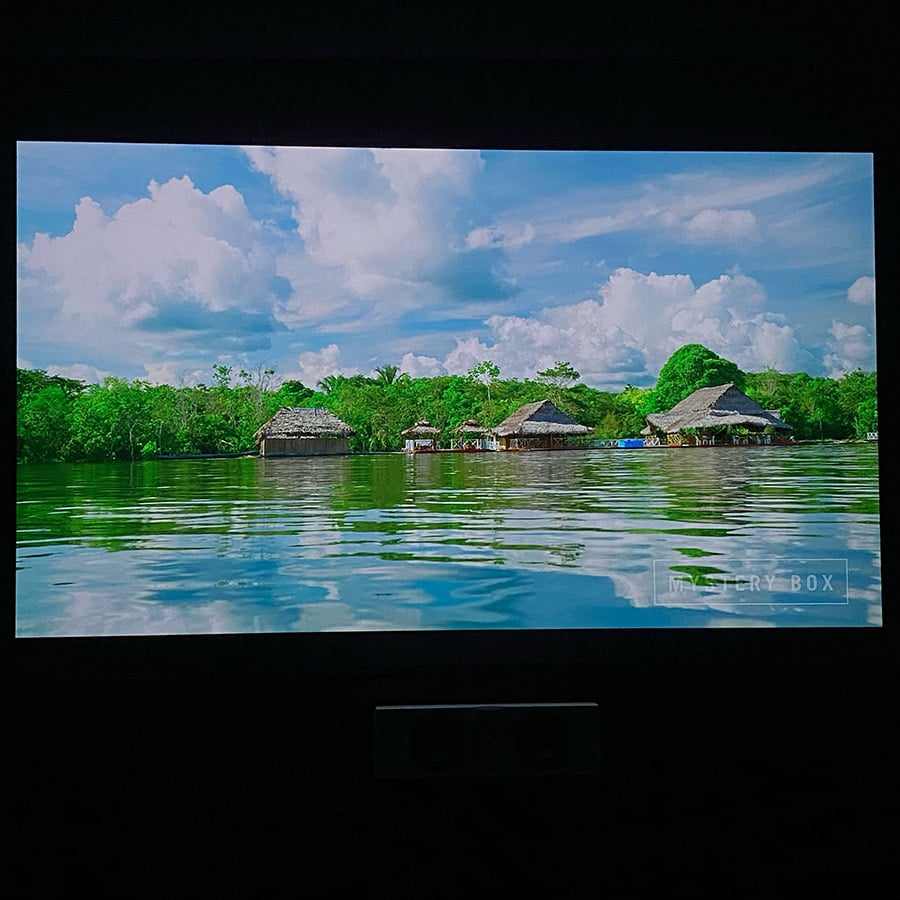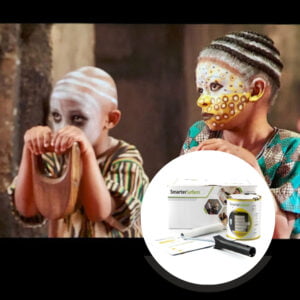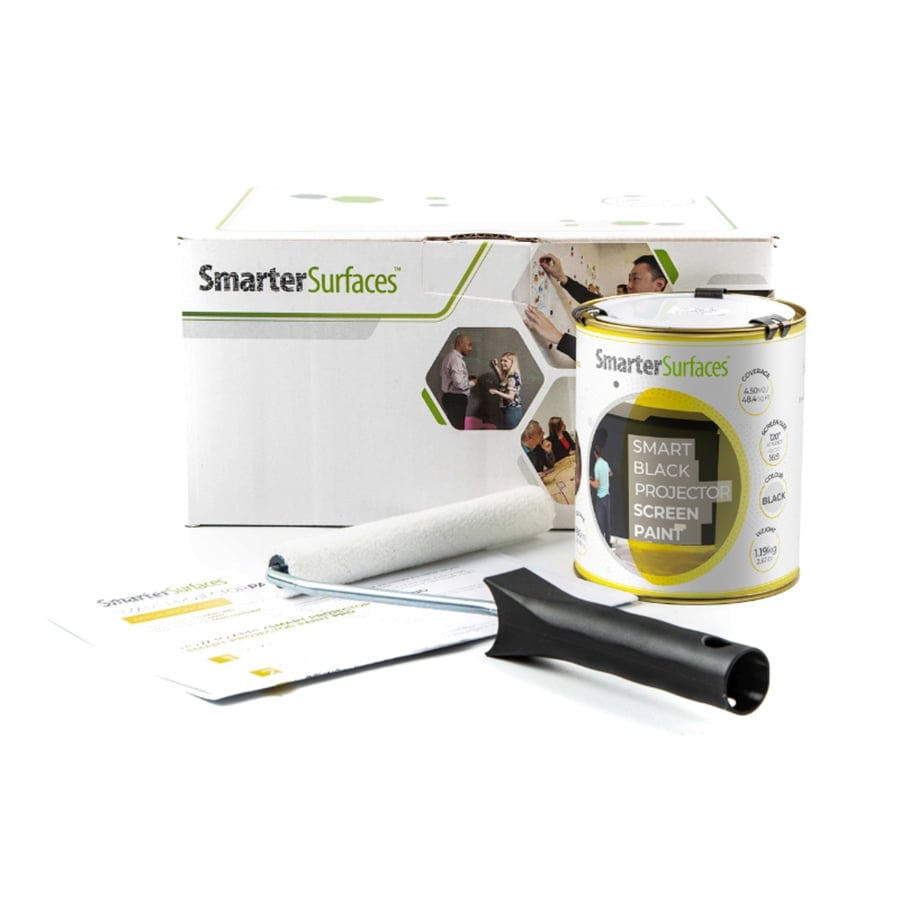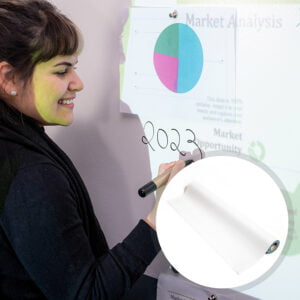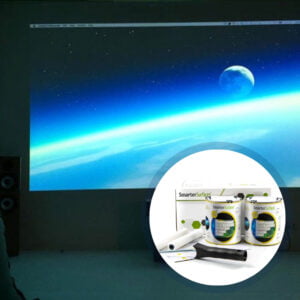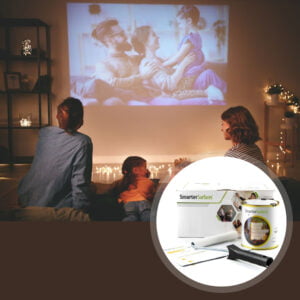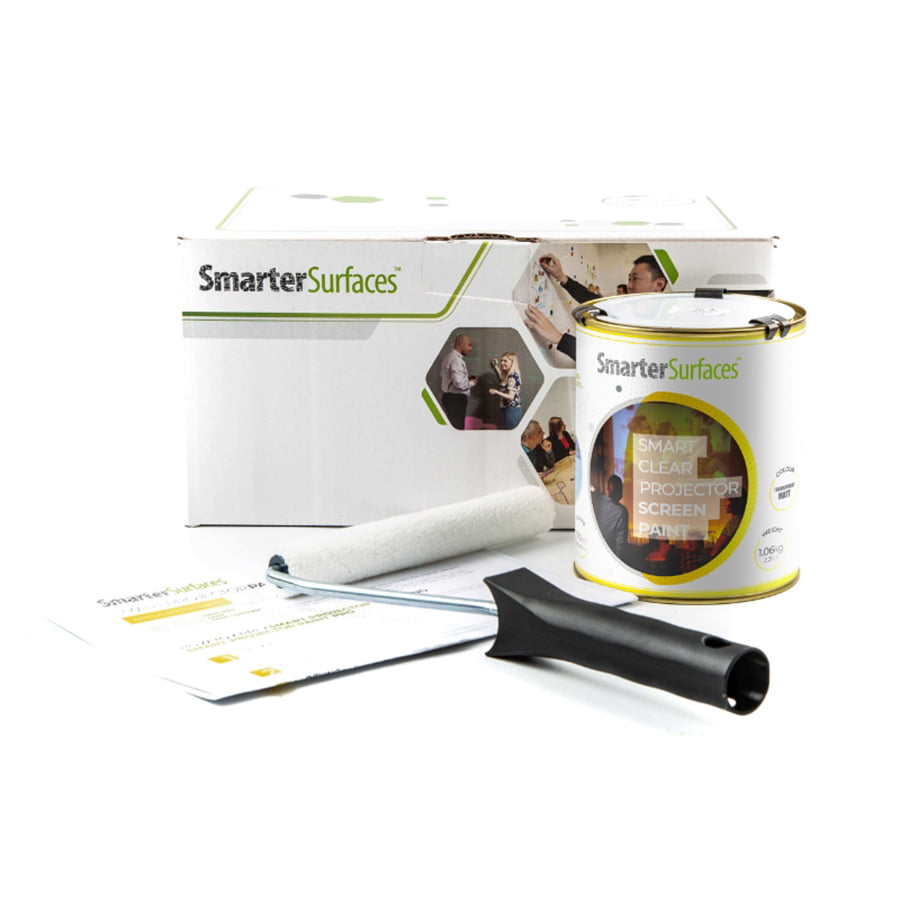Why Choose Ultra High Contrast Projector Screen Paint
Gaming & Cinema Ready Screen
Smart Ultra High Contrast Projector Screen Paint creates deeper black levels and higher contrast, thus transforming the way you enjoy movies, shows, and games.Vibrant Colors with Bright Projectors
The paint's formula rejects ambient light, ensuring optimal performance in low lighting conditions. Works best with projectors rated above 2,000 lumens to ensure vibrant colors.Superior Contrast and Depth
With advanced layering technology, it delivers superior contrast and visual depth compared to standard screens, enhancing black levels for a more vivid image.Maximum Projection Performance
Designed and tested for maximum performance with UST, HD and 4K projectors, eliminating hotspotting and maintaining image quality.Clear Images in Low Light
Perfect for dedicated setups, providing pixel clarity and uniform brightness in low ambient light, with a quick and easy application.For Use With Ultra High Contrast Projector Screen Paint
- Projector Requirements: HD, 4K and 8K Projectors
- Minimum Recommended Lumen Value: 2,000 Lumens
- Lighting: works in most rooms with low level ambient light
- Compatible Surfaces: can be applied to fabrics and is suitable for painting or refurbishing old screens, but not suitable for roll-up screens.
Performance
- 4K & 8K Ultra HD Ready
- Gain Value @ 90 °: 0.32
- Viewing Angle: 140 degrees
- Certification: Independent Projection Performance Report – CREST
Comparison Table
Compare the performance and specifications of Smarter Surfaces full projection range
Ultra High Contrast Projector Screen Paint - Technical Specifications
Colour: Grey
Finish: Matt
Coverage/Screen Size:
- 4.5m2 : 120”/320cm at 16:9 Aspect Ratio
- 25m2 : 301"/764.5cm at 16:9 Aspect Ratio
Volume:
- 4.5m2 Top Coat: 880ml
- 4.5m2 Base Coat: 880ml
- 25m2 Top Coat: 4.6l
- 25m2 Base Coat: 4.6l
Environmentally compliant to all Australian standards: low VOC, solvent free, PFOA & PFOS free and isocyanates free
Odour: Very Low
VOC: Less than 0.36%
Certification: Independent Projection Performance Report – CREST, Gypsum Surface Finish Quality Standard of Level 5
Need a hand choosing the right product?
We’re here for you! Whether it’s via video call, live chat, phone, or email, our team is ready to offer free expert advice, creative suggestions, and tailored product recommendations to ensure you make the perfect choice.
What’s Inside the Kit
Kit Contents 4.5m2
- Base paint tin
- Ultra High Contrast Projector Screen Paint
- Rollers
- Handle
- Application guide
Kit Contents 25m2
- Base paint tin
- Ultra High Contrast Projector Screen Paint
- Application guide
Ultra High Contrast Projector Screen Paint Reviews
Matt the Movie Buff - Cincinnati
Thompson Jarvic - Home Cinema Solutions
Explore More Products From Smarter Surfaces
- (0 Reviews)
Black Projector Screen Paint – Matt Black
From AUD$334.00 Select options This product has multiple variants. The options may be chosen on the product page - (0 Reviews)
Magnetic Projector Screen Whiteboard Wallpaper
From AUD$482.00 Select options This product has multiple variants. The options may be chosen on the product page - (0 Reviews)
Ambient Light Rejecting Projector Screen Paint
From AUD$318.00 Select options This product has multiple variants. The options may be chosen on the product page - (0 Reviews)
Clear Projector Screen Paint
From AUD$302.00 Select options This product has multiple variants. The options may be chosen on the product page
FAQ's
Also, our innovative projector paint is compatible with most projector models, including interactive ones, and it adheres seamlessly to surfaces like plaster, wallboards, wood, metal, and concrete.
Our tests showed no difference in sound absorption between painted and unpainted gypsum boards (SAC α = 0.04-0.07), thus confirming that our paint maintains the original acoustic properties of the surface.
Application Guide on Ultra High Contrast Projector Screen Paint
How To Apply Ultra High Contrast Projector Screen Paint?
Ultra High Contrast Projector Screen Paint is the perfect choice for all kinds of indoor surfaces, ranging from plaster, wood, wallboards, metal, concrete, and composites. If you prefer a roller or a spray, applying this paint is simple, and the results are outstanding.
To apply, follow these simple steps -
- Step 1: Ensure your surface is clean, dry, and free from any debris. Start by filling in any imperfections and sanding down the entire area for a smooth, even base.
- Step 2: Use masking tape to define the area you’ll be painting. This helps create sharp, precise lines and keeps everything neat.
- Step 3: For bare, untreated surfaces, apply two coats of White Primer. This step ensures maximum adhesion and an even finish.
- Step 4: Give your Ultra High Contrast Projector Screen Paint a good stir to ensure it’s well-mixed and ready to perform at its best.
- Step 5: Using a short-pile roller sleeve (preferably mohair or lint-free), apply the first coat of projection paint. Allow it to dry completely before moving on to the second coat for an even, smooth finish.
- Step 6: Once the first coat has dried, apply the final layer for maximum contrast and performance. Let the paint dry for 24 hours for optimal results.
Check out the easy-to-follow Application Guide. Request a sample pack to see the results firsthand. Or reach out to us, we are always here to help with any questions.
![]() A full application guide for Ultra High Contrast Projector Screen Paint.
A full application guide for Ultra High Contrast Projector Screen Paint.



